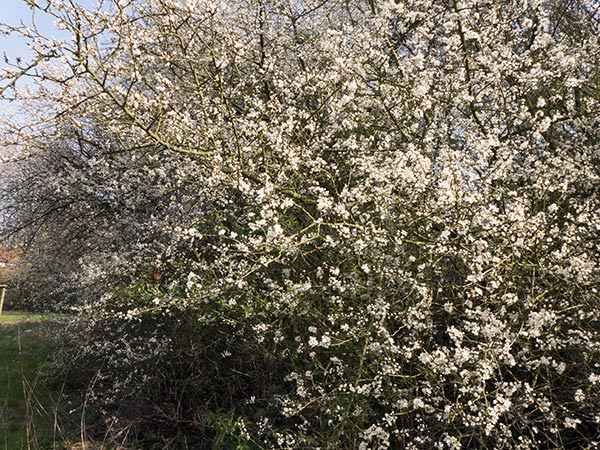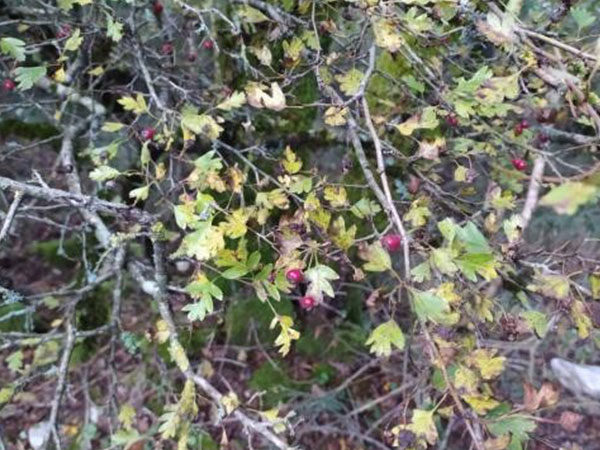binomial nomenclature
common name
Rose hip or dog rose
Rose hip or dog rose
General characteristics
It’s a thorny shrub that rarely get over 2-3 meters in height. The flowers, blooming in spring, are pale pink. The false fruits, whose correct term is rose hips, are shiny red and reach the ripeness between autumn and early winter.
Cultivation
The best positioning for its planting is between the sun and half shade. No particular soil is needed, growing also in poor and stony soils. It does not fear the cold, but needs to be steadily watered in the first year after planting, afterwards it’s possible to continue supplying low amounts only during the flowering and in summer, or in case of intense drought.
Trimming
Remove the dry branches and the damaged by the winter ones.
Connection with the fauna
Its flowering attracts a large number of pollinating insects (bees, bumblebees and butterflies). The rose hips are appreciated by several species of birds during the winter.
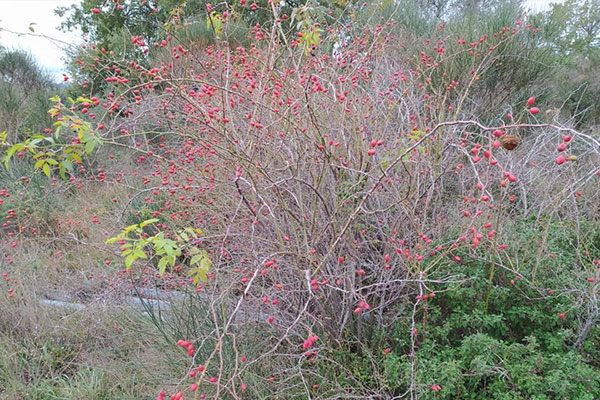
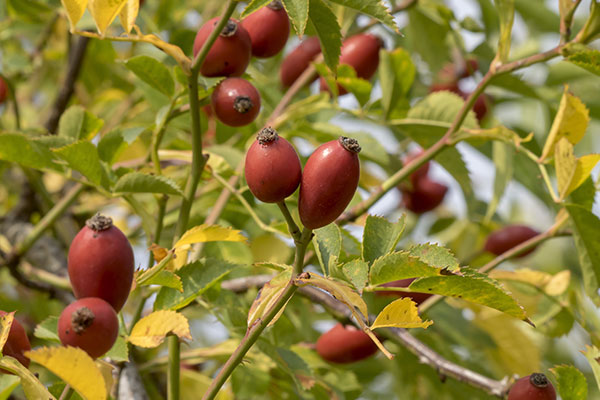
binomial nomenclature
common name
Prunus spinosa
Blackthorn
General characteristics
Blackthorn is usually a shrub-bushy plant, but can sometimes reach even 5 mt. It’s one of the first plants to bloom in spring. The white flowers are produced in March, shortly before the leaves, and the flowering continues throughout the month of May. The fruit is a bluish little drupe, turning black close to the full ripeness in October.
Cultivation
It’s a rustic plant, that fears neither intense frost nor heat and does not need any particular soil. Rainwater is enough, but it’s good to irrigate it regularly, especially during flowering and fruit production.
Trimming
Remove the dry branches and the damaged by the winter ones.
Connection with the fauna
Its nectar-rich flowers are particularly appreciated by bees. The fruits represent an important food resource for the birds that nest between the branches, and for some species of mammals.
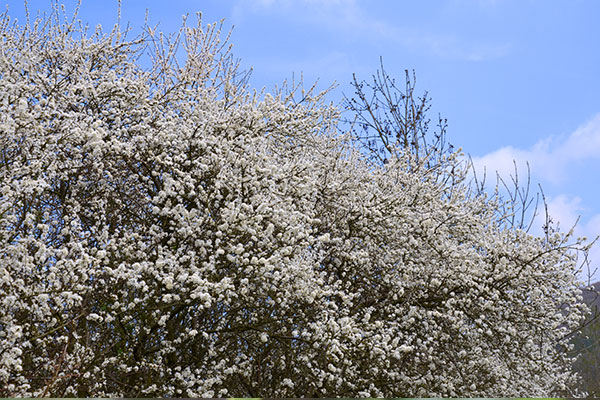
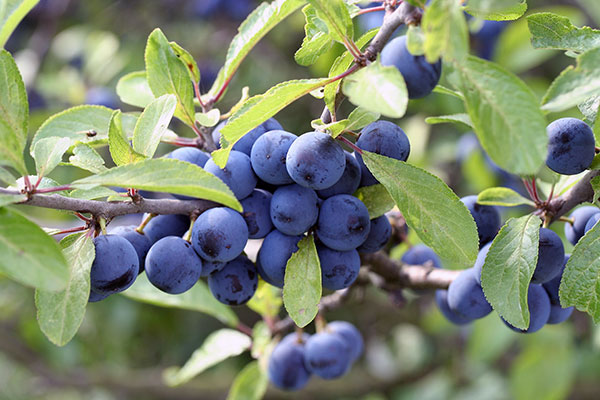
binomial nomenclature
common name
Sambucus nigra
Elderberry
General characteristics
It’s a shrub, from 2 to 8 mt tall, that rarely can grow as a tree. The flowers, blooming from April to June, are milky white, little and borne in corymbs.
The ripe fruits are black-violet and produced in clusters of drooping inflorescences with brown-red stems (thin element that sustains leaves, flowers or fruits in plants).
Cultivation
The plant must be placed in a place where it can receive sun for several hours per day. Elderberry adapts well to any type of soil, does not fear the cold, bears the drought and does not need to be watered often.
Trimming
During the winter, from November to January, trim too big branches.
Connection with the fauna
Its flowers are visited by bees and butterflies. The fruit-eating birds, provide to release the seeds many km away from the plant. All this ensures the multiplication of the elderberry.
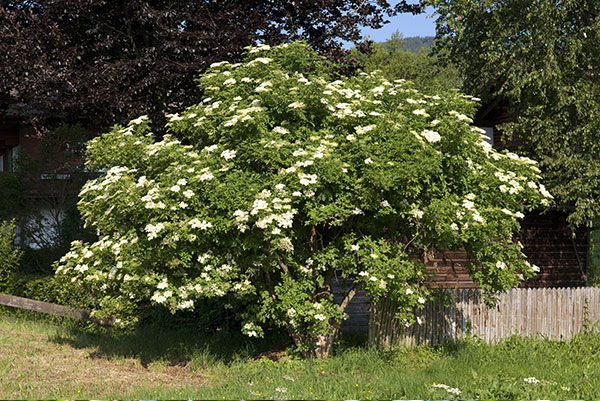
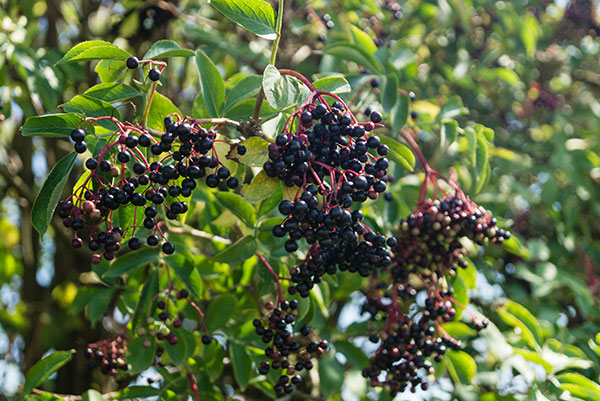
binomial nomenclature
common name
Ligustrum vulgare
Wild privet
General characteristics
Wild privet is a shrub. It’s deciduous in the coldest regions and evergreen or semi-evergreen in temperate and warm ones. It’s 0.5 to 2(3) meters tall and has strong roots, produces white and perfumed flowers in panicles, held on the peak of the sprigs. The fruits come in the form of small black berries.
Cultivation
Wild privet prefers sunny areas, can grow even in mid-shade, but total shade may compromise flowering. It does not require special soils.
Trimming
In late winter, it’s necessary to remove the dry branches or the ones damaged by the weather.
Connection with the fauna
The flowers are visited by the pollinating insects. Some species of birds feed on fruits and here they find both refuge and an ideal place to nest.
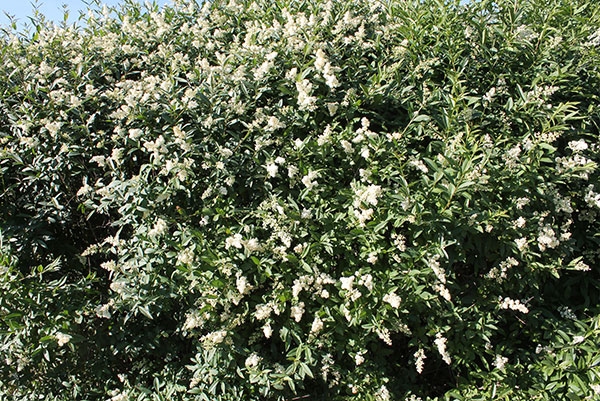
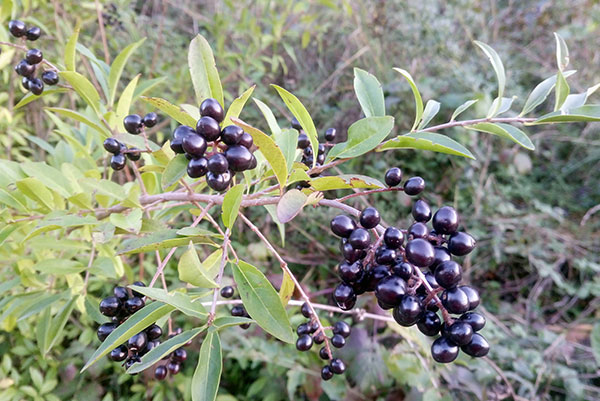
binomial nomenclature
common name
Crataegus monogyna
Hawthorn
General characteristics
It’s a shrub that in specific conditions can reach even 5-6 m in height, and whose branches are characterized by long and strong thorns. Hawthorn blooms between the end of March and May, producing white flowers that will yield coral-red oval fruits, less than 1 cm long, containing only one yellow seed.
Cultivation
It must be placed in a sunny or semi-shaded place and needs some hours of sun every day at least. It’s a plant that needs no special care, the newly planted shrub must be watered in the summer, especially in case of particular drought.
Trimming
It is expected only after flowering, to remove the branches compromised by the winter cold.
Connection with the fauna
The nectar of its flowers attracts pollinating insects, while its fruits are particularly appreciated by birds such as the blackbird. The thorns on the branches make it a tangled shrub, so that can provide protection for host animals.
